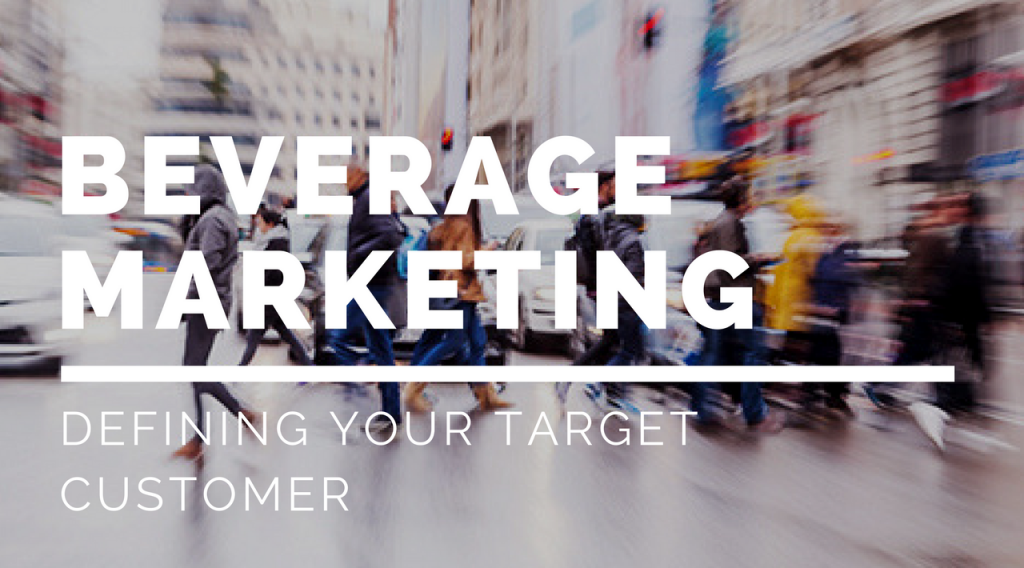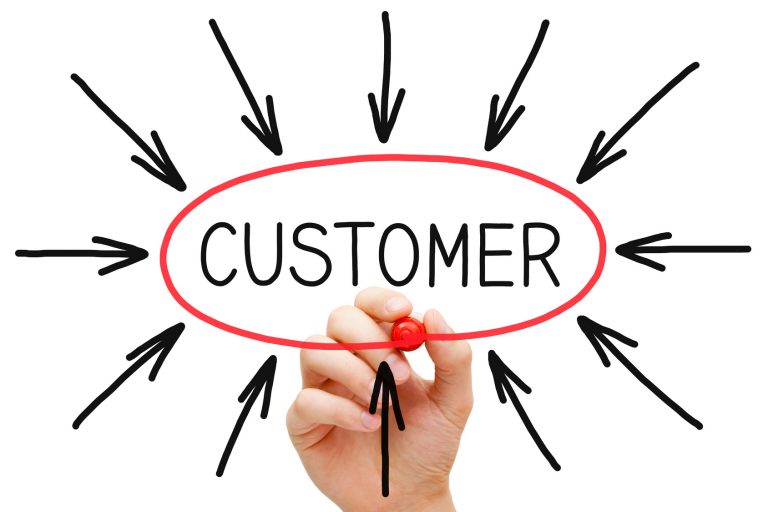How To
Beverage Marketing: Defining Your Target Customer
 In our latest blog post (Where to Start with Beverage Marketing?), we have pointed out some of the elements that are extremely important when it comes to beverage marketing and usually get overlooked by the new beverage entrepreneurs. The feedback that we’ve received only confirmed us that sometimes obvious things are not actually that simple and require more effort and resources. Well, that is the whole point of our blog, to set you on the right track and show the right way of doing things, when it comes to beverage business.
In our latest blog post (Where to Start with Beverage Marketing?), we have pointed out some of the elements that are extremely important when it comes to beverage marketing and usually get overlooked by the new beverage entrepreneurs. The feedback that we’ve received only confirmed us that sometimes obvious things are not actually that simple and require more effort and resources. Well, that is the whole point of our blog, to set you on the right track and show the right way of doing things, when it comes to beverage business.
What I’ve noticed, when it comes to marketing, fresh entrepreneurs think of it as only promotional activities. Well, that’s just one part of it. Marketing strategy is a plan that contains your brand positioning, consumer target and the action plan how to reach that consumer and grow your brand. So the first thing you have to think about is the consumer you are targeting. At the end of the day, the consumer buys your product, and if you planning to build a sustainable business you have to sell your product.
Today, we will review simple steps where to start when defining your target customer and how to gather some insights about him, which can be crucial even before you develop your product.
Understand the problems that you want to solve
This is the starting point for you, defining your target customer. To understand others, first, you have to understand yourself. Identify, what kind of problems you want to solve with your product and why it should exist on the market. Write it down, and try to simplify as much as you can. You should be able to explain it with one sentence. Don’t try to overcomplicate it, it’s beverages we are talking about, not some magic potions. Your product should have its’ core benefits that your customer could understand it without any additional education.
Identify consumer needs
Now, you can start to look into different groups of consumers. Try to understand which groups of people have similar needs or problems you want to solve. It is very simple, in order for your marketing to be effective, you have to know who you are marketing to. And to understand that, just simple demographic segmentation is not enough. The reality is that you probably won’t have a big budget to market your product, this is why the better you understand the actual need in the market, the better your results will be.
“Identify what are the consumer needs and how your product can fulfill them.”
Try to understand what motivates different groups of consumers, what drives them to purchase different products, what are their dreams or aspirations. This type of info will help you to create the brand that people can relate to and to stand out in the market compared to competitors. If you want to sell your product to people, you have to know who they are first.
Define your target customer
If you assume that you will sell your product to everyone, you are making a big mistake. You must identify you target customer, and be specific about it. The better you will do that, the bigger advantage you will have when building your brand and developing your product. If your description will be generic, you won’t stand out in the market. If you want to target masses, your marketing budget should be formed accordingly. Don’t be afraid to be specific, it will not limit your opportunities but rather will show a clear path to reach that consumer.
So when defining your consumer target, do not limit yourself only with demographics. Dive deeper. Look for their needs, motivation to buy, problems they are facing, what matters to them, etc. The better you understand them, the more effective your marketing strategy will be. And be creative about it, paint their picture, the persona you want to target.
Gather insights
To avoid mistakes, you cannot base your decisions only on your gut feeling or some kind of assumptions. If you do that that will probably lead you to failure. We all probably see the faces of our loved ones on their birthday, when our gift to them is not something they actually need or want. It’s that polite smile, but you can see the disappointment in their eyes. This situation is very similar, don’t offer the product that you think the people need. First, try to find out what do they need. You probably heard plenty of stories, when some huge company buys a smaller brand, well these types of decisions are based on data and numbers. Big companies base their decisions on facts, not assumptions. You should try to find out as much as you can too.
Comprehensive market research can be very expensive and there’s a chance that is not an option for a new startup. But there are alternatives that can be much cheaper, but still effective in first stages of your journey.
The first resource you can try to exploit is the secondary data. It is something that has been already done by others. There are plenty different data online, about different markets, consumers etc. You can search for that info that can be useful for you. Yes, it might cost some money, but still much cheaper than custom research. This is the info that will give you a general understanding of the market and will help you to build first steps of your future business.
Next, you should go a little bit deeper, and try to conduct a more specific research about your target consumers, their needs, motivations, etc. The cheapest way to do that is to go to the place where that consumer shops and simply observe. Just try to be as much objective as you can. Do not base your observations on your assumptions about your product. You should also ask some questions, which can be very valuable for you. I can guarantee you will hear or see something that you haven’t before.
If you already have identified specific target customer, try to search for people that fit those characteristics, and get their feedback about their behavior, when buying products. It is more effective to find people that you don’t know. This way you will get more honest answers.
Customer Concept
The more professional approach to this is to conduct a focus group, containing participants that fit your target customer category perfectly and is moderated by a professional. This process requires a bigger budget, because of space, where the research will be conducted, selection process, incentives, moderation costs, etc.
Another option, that can be very effective for you in various ways, is to build an early-birds community. Usually, these are the people, who fit your customer profile, you involve them in the development process of your product and brand building, they become more emotionally invested in your brand, they want the brand to succeed. Probably not as much as you do, but still.
The process is not easy, but definitely worth to try. First, you have to identify those people and find the motivation for them to get involved in such process, maybe you have to think about some incentives or exclusivity. Over the course of the development process, you involve them in different stages of the decision-making process by asking questions, gathering feedback and opinions. This can be done online or face-to-face. The good thing that can come out of this that not only you get the info you seek, but also there’s a big chance they will become your first customers.
These are just some of the methods you can do when trying do research your target consumer. It doesn’t matter how you will do this, just make sure you do. You have to know who you are marketing to, what motivates people when buying different products. These things will help you to build the unique brand that stands out in the market. Remember, every recipe can be copied, but the brand is what makes your product unique.
To summarize, I would like to point out the most important steps, when defining your target customer:
- Identify your product core benefits (functional & emotional)
- Identify consumer needs
- Define your target consumer & be specific about it.
- Do the research & gather insights.
Original article was published in Beverage Industry Blog.










